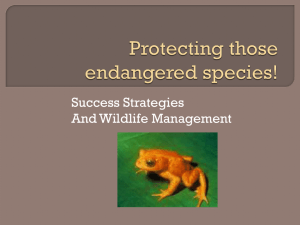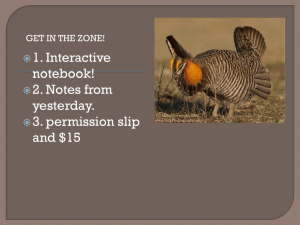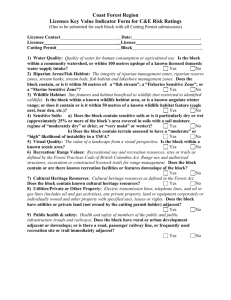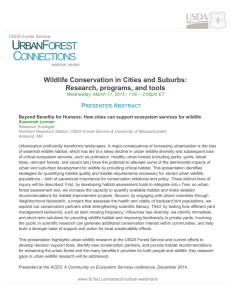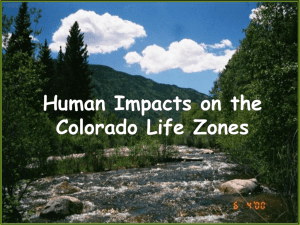Local Wildlife & Habitat: K-2 Science Lesson Plan
advertisement
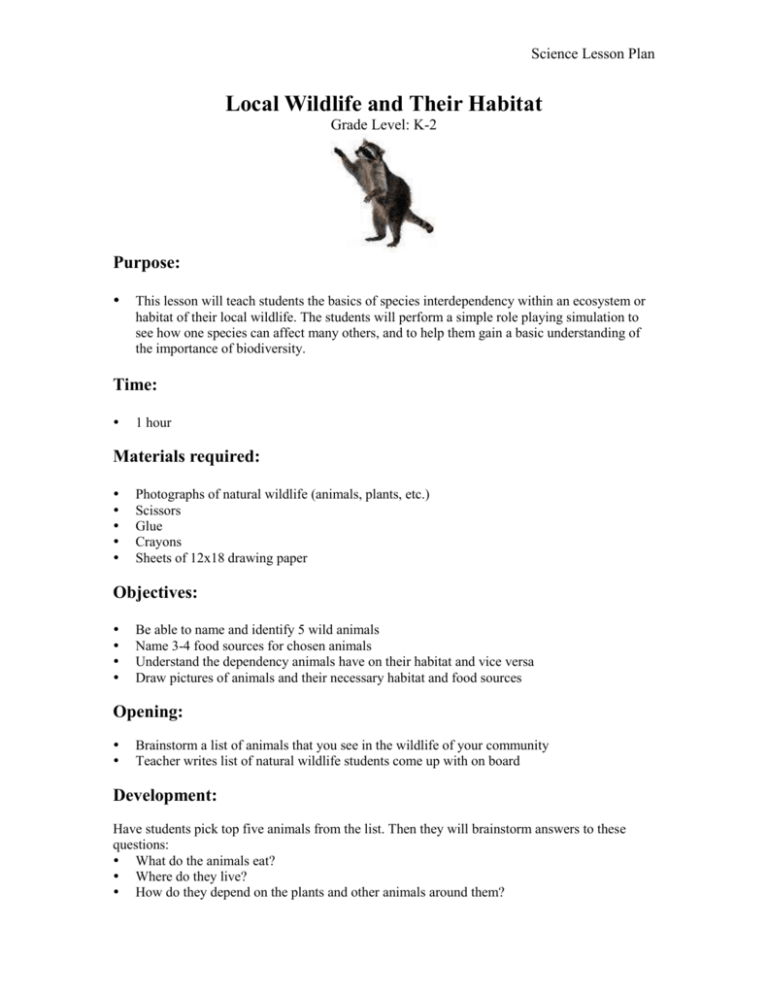
Science Lesson Plan Local Wildlife and Their Habitat Grade Level: K-2 Purpose: This lesson will teach students the basics of species interdependency within an ecosystem or habitat of their local wildlife. The students will perform a simple role playing simulation to see how one species can affect many others, and to help them gain a basic understanding of the importance of biodiversity. Time: 1 hour Materials required: Photographs of natural wildlife (animals, plants, etc.) Scissors Glue Crayons Sheets of 12x18 drawing paper Objectives: Be able to name and identify 5 wild animals Name 3-4 food sources for chosen animals Understand the dependency animals have on their habitat and vice versa Draw pictures of animals and their necessary habitat and food sources Opening: Brainstorm a list of animals that you see in the wildlife of your community Teacher writes list of natural wildlife students come up with on board Development: Have students pick top five animals from the list. Then they will brainstorm answers to these questions: What do the animals eat? Where do they live? How do they depend on the plants and other animals around them? Science Lesson Plan What would happen to these animals if their main food source no longer existed? Once teacher gets list of items in the habitat, she will then write down the animals and things in the habitat on small sheets of paper to accommodate the number of kids in the classroom. Then the kids will draw a slip, and have to act out the piece of paper they got. It could be a tree, deer, raccoon, running water, etc. Then the teacher will ask one plant or animal to step out of the picture. “Will all the oak trees please sit down” The children sitting down will represent the dying oak trees. Then the class will have to discuss how the loss of the trees has affected the rest of the habitat, and what animals need to find new homes or source of food. If any species depends solely on one of the other species I have asked to sit down, they will also have to sit down. This will be repeated until there are few to none students left. Closing: Then discuss the implications of the simulations with the class. What happens to different plants and animals in an area when one of their sources is eliminated. Make sure they understand the dependency ecosystems have with everything inside them. Student Assessment: Students will choose a picture of an animal and cut it out, then paste it on the white pieces of drawing paper. Each student will need to draw and label the habitat they have created for their animal. On the back of the paper students will write the two most important things they learned about animals and their natural wildlife habitats in their community. Extending the Lesson: In future lessons, students will take the knowledge they have gained from their community wildlife habitat, and use it to explore habitats from all over the world. 1 1 Adapted from http://www.nationalgeographic.com/xpeditions/lessons/08/gk2/ecosystem.html


